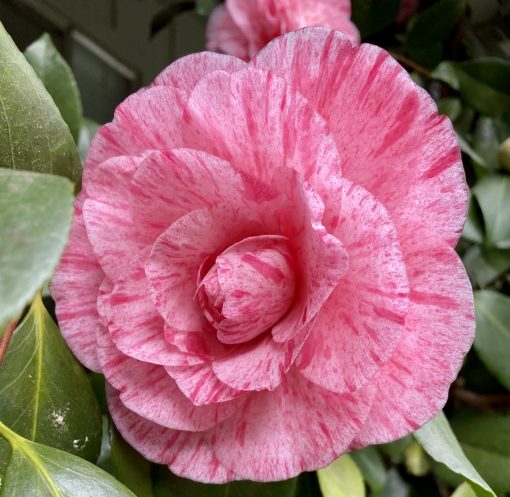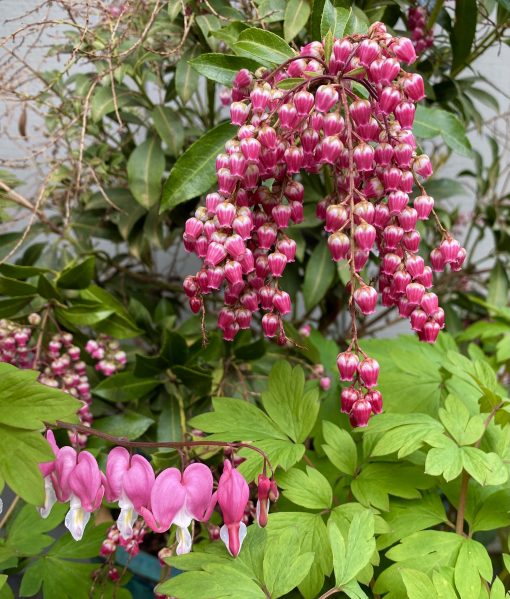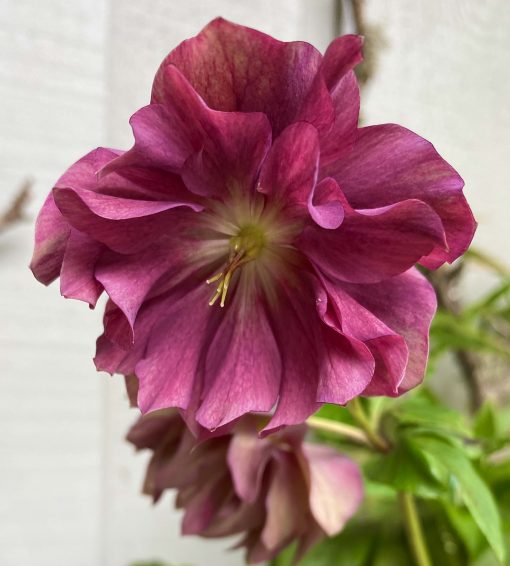
Nature is amazing. No matter how heavy the rain or gusty the wind, flowering trees & shrubs haven’t missed putting on their much awaited spring show. The nectar these flowers provide for bees and other insects is indispensable for nesting birds and the human spirit. This world would be a dull place without them.
The cold and rainy weather didn’t stop an old fashioned shrub like forsythia from blooming. They figure prominently in many old gardens because they are tough plants, able to survive neglect and still look beautiful. The bare stems of forsythia are completely covered with deep golden-yellow flowers in late winter and early spring and become the focal point of the landscape when in full bloom. The showy stems of this easy care shrub are great for cutting. Forsythias are native to eastern Asia but a chance discovery in Germany by a grower who specialized in breeding for the cut flower industry led to the especially vivid variety ‘Kolgold’ in the 1800’s. Forsythia has long been used in Chinese medicine. The flower petals contain powerful bacteria-fighting properties which make it an important dressing.
Flowering quince is another old garden staple providing early color. They are easy to care for and nearly indestructible in almost any soil that is well drained and not overly fertile. Once established quince is a very drought tolerant plant and their spiny branches make them an excellent choice for hedges, screening or as a security barrier. There are red, pink, orange and white flowering varieties. The Toyo Nishiki cultivar even has pink, white and solid red flowers all on the same branch.
Who doesn’t appreciate camellias at this time of year? It seems they are always in bloom given that there are so many varieties with different blooming times. Camellia flowers, thick, tough and full of color, easily sail through rainy weather. Camellias bloom for a long time and with so many types you can have one blooming from October all the way through May. This showy evergreen shrub is quite drought tolerant once established. Yes, with some mulch and and a deep soak every so often they require much less irrigation than you’d think. There are even fragrant varieties, such as Pink Yuletide, a sport of the popular Red Yuletide.

Another tough plant that can take weather extremes is the Lily-of-the-Valley shrub (Pieris japonica). There are many varieties of this spring bloomer. Some have pure white flowers, other sport various shades of pink or dark rose.
I have the smaller variegated foliage model with dainty, drooping clusters of pure white flowers in early spring. Right now it is covered with flower buds so dense that you’d think it was already blooming. The new growth in the spring has a beautiful pink tint. This shrub will hold up to the wildest weather. Another plus for the Lily-of-the-Valley shrub is that is useful for fire-scaping in the landscape and it isn’t on the menu for deer either. I love this tough plant so much I now have a Valley Valentine plant with lovely deep rose flowers.

I was able to rescue a few potted hellebore from my burned out property. They didn’t look like much that year with all the foliage burned off but they came back nicely and are in full bloom now. One of my favorites is called Cinnamon Snow but all of the varieties of this buttercup relative accept wind, rain, cold and less than perfect soil while getting by with only moderate watering in the shady summer garden. Deer aren’t attracted to them either.
Don’t let the weathers spoil your spring fever. Spring may be a little slow in arriving this year but it’s coming.
